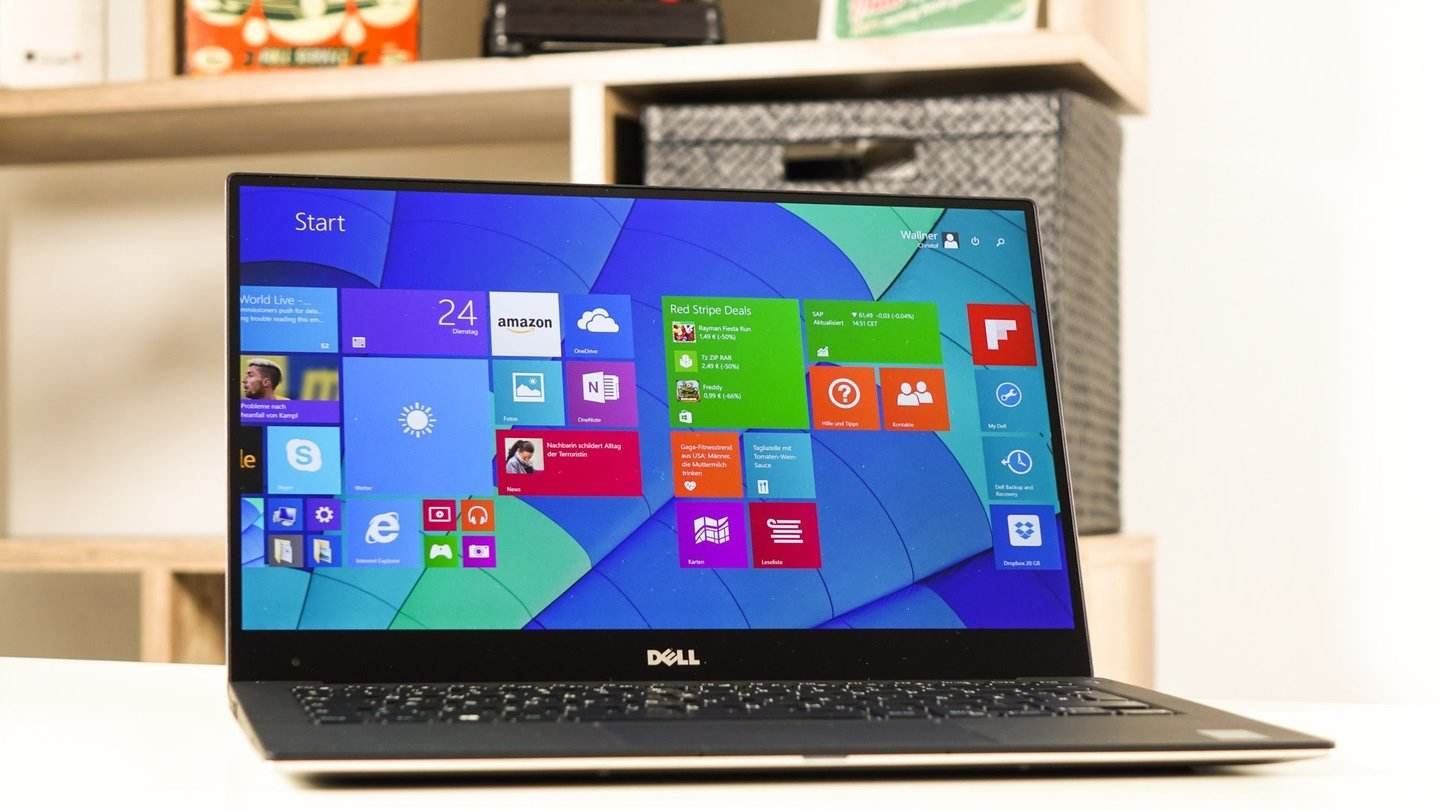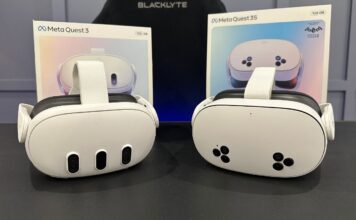 Ultraportable computing is being challenged by thin but powerful Ultrabooks, innovative 2-in-1’s, and convertibles that bring all the power of a desktop to new and interesting forms featuring longer battery life as well as thin-and-light form factors.
Ultraportable computing is being challenged by thin but powerful Ultrabooks, innovative 2-in-1’s, and convertibles that bring all the power of a desktop to new and interesting forms featuring longer battery life as well as thin-and-light form factors.
The Dell XPS 13 has been around for nearly a year now, but is still one of the most compelling options for a true ultraportable PC. How does it match up with the popular MacBook Air?
Apple’s MacBook Air line has been dominant for a number of years because they offer thin and light aluminum enclosures, bright displays as well as the ability to run the latest Mac OS software and even Windows simultaneously.
Intel based its entire Ultrabook platform from the MacBook Air, which has evolved from a pricey niche product into Apple’s consumer notebook popular with students, mobile workers and anyone desiring a reliable portable device that features long battery life.
Aside from the MacBook Air, Apple also sells the 12-inch Retina MacBook, which is an even thinner and lighter notebook that’s got a lower-power processor and only one port. The Retina MacBook is a premium product that brings the Retina Display technology to a 12-inch form factor and seems geared towards travellers, CEOs and users willing to pay a bit more for all of Apple’s modern features.
A worthy challenger

Until the Dell XPS 13 came along, there were very few PC counterparts that could match the portability of the 13-inch, and most specially, the 11-inch MacBook Air.
PC users or anyone shopping for a comparable subportable notebook experience will appreciate Dell’s 13-inch laptop, which is cleverly housed in an 12-inch enclosure. It has all you need to stay productive on the go.
This slim laptop boasts a classy machined aluminum body in silver finish and strong Gorilla Glass screen. It comes preloaded with Windows 10 and features a Full HD display for crisp text and images, and 128GB SSD storage.
The diminutive size of the Dell XPS 13 might hint at a low-powered processor, but it features the latest 6th Generation Intel Core i5-6200U (3M Cache; Up to 2.8 GHz).
These are the very latest Intel Skylake processors which feature speed and power but also improve on battery consumption. You can read more about this class of processor in our overview here.

A true engineering marvel, the Dell XPS 13 features a mix of interesting materials including rugged rubber, machined aluminum, carbon fibre and Gorilla Glass to protect the display. Build quality is quite impressive and the 13.3-inch “infinity” display with 1920 x 1080 resolution (and virtually no bezels) has full HD image quality which is great for playing back videos and editing photos at a high resolution.
Display resolution is one area where the Dell handily beats the MacBook Air, the 13-inch MacBook Air has a 1440 x 900 native resolution and the 11-inch sports a 1366 x 768 resolution which means are both less dense and less sharp.

Both MacBook Air models have great battery life. The 11-inch models can cruise along for up to 9 hours and the 13-inch MacBook Air is a champion with up to 12 hours of use on a full charge.
The Dell XPS 13 I tested earlier this year managed around seven hours of use out of a full charge. It should be better now with the new Skylake processor as well as with Windows 10, which is expected to improve battery life on devices —Dell actuallly currently rates the XPS 13 as “up to 18 hours” which would be a dramatic improvement. Even at seven hours, that’s quite good for a subportable notebook, although it pales compared to even the smaller MacBook Air.
I’m glad that Dell offers a variety of XPS 13 variants in the market. Aside from multi-touch and non-touch enabled variants, they also have versions that are preloaded with Ubuntu as an option to Windows 10. As for storage, there’s a range starting at 128GB SATA, 256GB PCIe, 512GB PCIe and 1TB PCIe SSD options.
In terms of ports an I/O, the XPS 13 does have two USB 3.0 ports, one miniDisplayPort connector, an SD Card reader and a headset jack. For wireless, you get Bluetooth as well as integrated 802.11ac Wi-Fi.
The MacBook Airs share two USB 3 ports, a Thunderbolt 2 port and the larger 13-inch MacBook Air has a SDXC card slot. 802.11ac Wi-Fi and Bluetooth 4.0 wireless technologies are also on tap. I would say that the Dell and Apple devices are pretty evenly matched when it comes to I/O and connectivity.
| 13.3-inch Full HD Infinity display (165 ppi) |
6th generation Core i5 CPU with 8GB RAM, 128 GB SSD |
30.4 x 20.0 x (0.9-1.5) cm, 1.26 kg |
|
| Apple MacBook Air 13-inch (base configuration) | 13.3-inch display at 1440 x 900 resolution (128 ppi) |
5th generation Core i5 CPU with 4GB RAM, 128GB SSD |
32.5 x 22.7 x (0.3-1.7) cm, 1.35 kg |
As you can see from the above chart, the XPS 13 actually weighs a bit more than the 11-inch MacBook Air and less than the 13-inch MacBook Air, but since it does feature an HD display with the same resolution as a typical 13-inch display in a smaller enclosure, it really trumps the MacBook Air line in terms of display size and quality. The featured XPS 13 also has the advantage of a newer intel Core CPU and ships with 8GB of RAM, compared to 4GB in the base MacBook Air.
Bigger is definitely better
Considering that, aside from the keyboard, the display is the one aspect of a computer that users interact with the most, then considering the better display, the higher resolution and the most accurate colour reproduction will always be preferable. Even more so if the size and weight of the notebook isn’t compromised.
Looking at the landscape of similar PC models, it is surprising that no one has been able to pull off what Dell has achieved with the XPS 13, which makes it even more special and a worthy notebook to receive an upgrade with the latest available processors and technologies.
Conclusion
The Dell XPS 13 with its 13-inch Infinity Display mounted on what is essentially a 12-inch notebook frame, makes this device quite unique and one of the most powerful and portable notebooks in the market today. Ideal for students, small businesses and BYOD applications, the non-touch version of the Dell XPS 13 has all the specs and functionality to run Windows 10.
The Dell XPS 13 fits right between the Apple MacBook Air 11 and MacBook 13 models in terms of weight and size even if it outshines both these devices in the areas of processing power, screen size and resolution while matching (or even beating) them in storage, RAM capacity and connectivity options. Truth be told, the XPS 13 is making the venerable MacBook Air line look a little old.





































